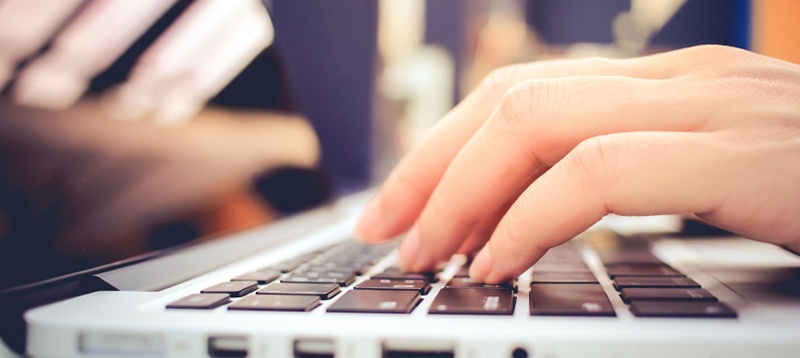How to Speak Your Prospects' Language
David Ogilvy, called The Father of Advertising, said, “If you’re trying to persuade people to do something, or buy something, it seems to me you...


As inbound marketing consultants, we regularly recommend to our clients that if they find an article that would be appealing to their target persona that they write a blog about it and share their opinions in order to shed some light on the topic.
We like to take our own recommendations and put them to practice here at LeadG2 so here it goes.
 Over the years, studies on inbound marketing have covered a number of industries and brought out some great points about why companies are starting inbound marketing initiatives and what companies are struggling with when starting an inbound program.
Over the years, studies on inbound marketing have covered a number of industries and brought out some great points about why companies are starting inbound marketing initiatives and what companies are struggling with when starting an inbound program.
A number of respondents mentioned the lack of an inbound marketing strategy as their primary challenge to having a successful inbound program. Hey, we feel your pain and want to help!
Since the main challenge to inbound marketing success for marketers is lacking an inbound marketing strategy, we wanted to give you three steps to developing an inbound marketing strategy from our inbound planning day.
As you read through these steps, please keep in mind that these are steps to developing an inbound marketing strategy, not an inbound marketing program. These are just the three steps to get you started. We have been using a 7-Step Lead Generation process with our clients for years which is much more comprehensive than these 3 steps and starts with an entire day dedicated to inbound marketing planning and step 7 ends with convert. Converting is the best part of the entire process because that’s where the money is. However, each of these steps is important and it’s important that anyone getting started has a solid strategy in place and you know not just what you need to be doing to be successful but how to do it.
The first and most obvious step in developing an inbound marketing strategy is the planning phase.
The quote that comes to mind as you get started is “You don’t plan to fail, you fail to plan.” Even though I say that it’s “the obvious step,” you would be surprised at how many companies do a little research, purchase a marketing software license or set up a WordPress blog and tell their marketing coordinator to “just start blogging” with no real direction or purpose. This is probably why 46% of the companies state that in effective planning is the biggest challenge to their success.
There are a number of decisions to be made at the beginning of the planning process that companies fail to consider including: who will do the work? (in-house, outsource or a combination of the two), who are we targeting?, who will create the content? (write blogs, develop premium content), who will promote the content? (it’s been said that you need to spend more time promoting your content than actually writing it), who will perform campaign optimization (because you can’t get better results without looking at what worked vs what didn’t) and last but certainly not least… who will keep track of the incoming lead flow and follow up with the leads?
In order to start developing content you have to know a lot about who you are targeting with your content or you are certain to miss the mark with your messaging, have your content seen by no one and shared by even less than that. Yes, that’s reality. Even if you create great content there is a chance that it won’t benefit your marketing efforts if it’s targeted at the wrong audience.
This is where creating target personas comes in, and it’s not just guessing who your prospects are and the behaviors and interests of your clients. You would be amazed at how little some companies know about who their customers are and what we hear during our inbound planning day when we discuss creating personas. We hear a lot of “well, I don’t know.. maybe they are on Twitter” or “no, we don’t really know about the buying process our clients undergo when purchasing our product or service.”
Creating a “real” target persona should include research on current customers and their purchasing tendencies as well as your prospects. In order to do this you need to survey salespeople and clients and come up with a sound look at what your audience looks like. In addition to surveys, you can look to:
Reviews – has your target audience left reviews on your competitors sites or review sites?
Forum – is your target audience “sounding off” in community forms? This is a great way to tap into the psyche of your target audience.
Informational interviews – talk to past clients (via phone) and have an open conversation around their goals, fears, and challenges.
Creating an effective inbound marketing strategy is cited as the biggest challenge to success and was followed closely by lack of content creation. No wonder why some people are having challenges with inbound marketing… they are challenged by planning and content creation. Wow.. if you can’t get those two right your chances of success are probably pretty close to 0%.
Even though I have recently said, “we focus too much on content and brainstorming,” it’s obvious that it’s time well spent. Pro tip: create SOPs for how content will be organized: calendar templates, content development process, promotional content planning templates, etc.. The success of a great inbound marketing strategy is found in the efficient systems built that will help it succeed.
Companies that are struggling with inbound marketing, whether it’s lacking a strategy or not having a content plan shouldn’t throw in the towel and quit.
Not by any means. The key for companies that are struggling with their strategy and vision for their inbound program is to take a step back and start to craft this illusive inbound strategy with their team. If you don’t have the resources to do this in-house you should consider bringing in an outside expert to provide guidance and help craft a sound strategy that can translate into a content creation plan and development of target personas.
Best of luck with overcoming the challenges of being an inbound marketer. Helping folks like you is what keeps our team up at night. Let us know if we can help.
*Editor's Note: This blog was originally written in 2014 and has since been updated.

David Ogilvy, called The Father of Advertising, said, “If you’re trying to persuade people to do something, or buy something, it seems to me you...

55 Brands who prioritize blogging efforts are 13x more likely to see positive ROI, and 55% of brands say blog content creation is their top inbound...

If you’re using inbound marketing, coming up with blog post ideas is a constant challenge. If you’ve developed your buyer personas and have done your...